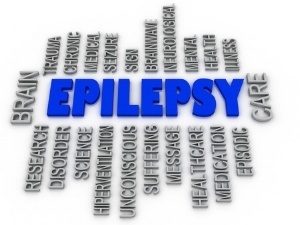
Epilepsy is a neurological disorder that causes unprovoked seizures. A diagnosis, according to the Mayo Clinic, requires at least two unprovoked seizures. Approximately 180,000 new cases of epilepsy are diagnosed each year, and it is estimated that 1 in 100 individuals will suffer from an unprovoked seizure at some point during their lifetime. Epilepsy can be similar to migraines in that the exact cause is often unknown but the symptoms can be debilitating and downright scary. Unlike migraines, there are listings for epilepsy included on the Social Security Administration’s (SSA) impairment list (aka the “Blue Book”) of recognized disabilities.
Blue Book Seizure Listings
The Social Security Blue Book is the Social Security Administration’s (SSA) listing of disabling impairments. There are actually two listings for epilepsy. Both fall under the neurological disorder category: the first, 11.02, is for convulsive epilepsy, the second, 11.03, is for non-convulsive epilepsy. The former involves grand map or psychomotor seizures resulting in a lack of consciousness, while the latter requires a petit map or partial seizures that are generally less severe in nature. To qualify for Social Security disability under 11.02, the applicant must have more than one conclusive seizure per month. Under 11.03, the applicant must have more than one non-convulsive seizure per week. Seizures under both must persist despite at least three months of medically prescribed treatment.
To determine how severe the impairment is, and whether it rises to the level of a disability, the SSA will evaluate the “type, frequency, duration, and sequelae of seizures.” For this reason, and as is always true with Social Security disability (SSD) applications, documentation is fundamental. An applicant seeking SSD should gather physician records that detail the exact nature of the seizures, the prescribed treatment, the applicant’s reaction to the prescribed treatment, and if possible, blood tests showing that the applicant has taken the prescribed antiepileptic drugs. Since an applicant can describe a seizure in any way they choose, it is very helpful to provide observations from other individuals or medical officials who have observed the applicant having a seizure.
Other Ways to Qualify
If an individual’s seizures do not meet the frequency or other requirements under the SSA’s impairment list, it may still be possible to qualify for benefits if they otherwise meet the requirements for benefits; namely, a severe disability that causes the applicant to be unable to participate in gainful employment.
Additionally, there are multiple causes of seizures — including brain tumors and severe head injuries, some of which may be considered disabilities in and of themselves. Depending on the facts of a case, it may be easier to pursue disability benefits based on the underlying disease.
Help With Your Disability Application
Epilepsy is just one of the many disabilities that can serve as the basis for Social Security benefits. Each type of disability and situation is unique and applications should be tailored accordingly. For more information about qualifying and applying for Social Security disability based on seizures or other disabilities, contact the attorneys at the Whitcomb, Selinsky PC or its sister firm, the Rocky Mountain Disability Law Group today. Please call (303) 534-1958 or fill out the contact form on our website.


